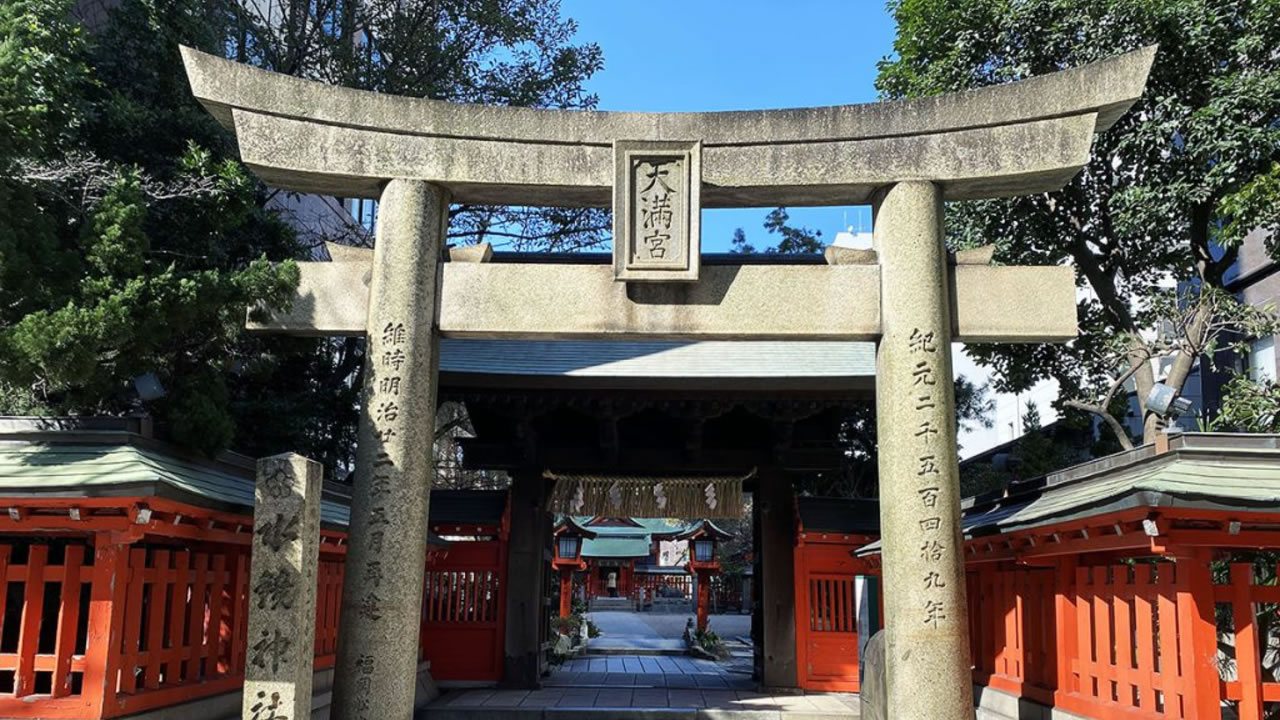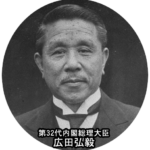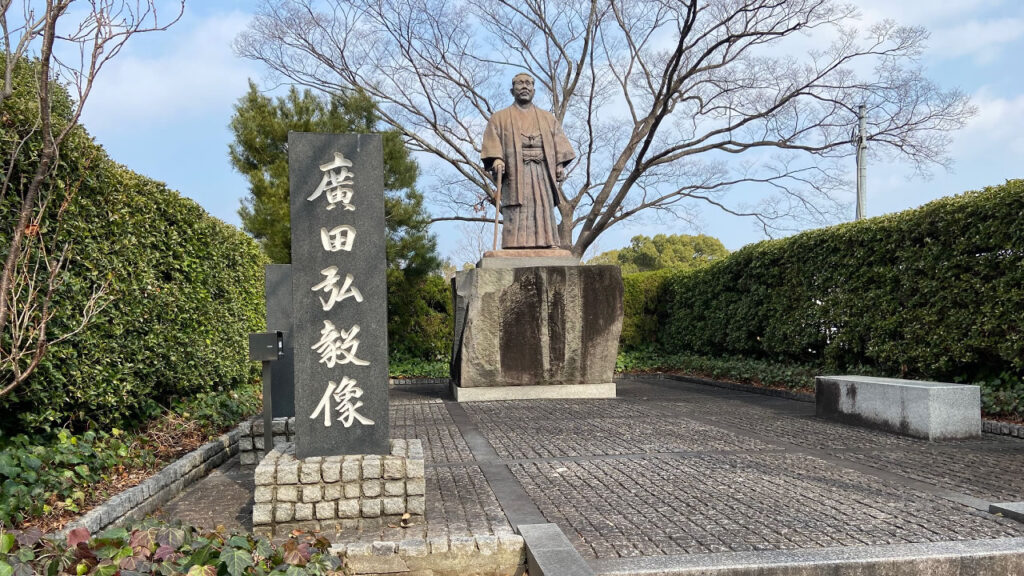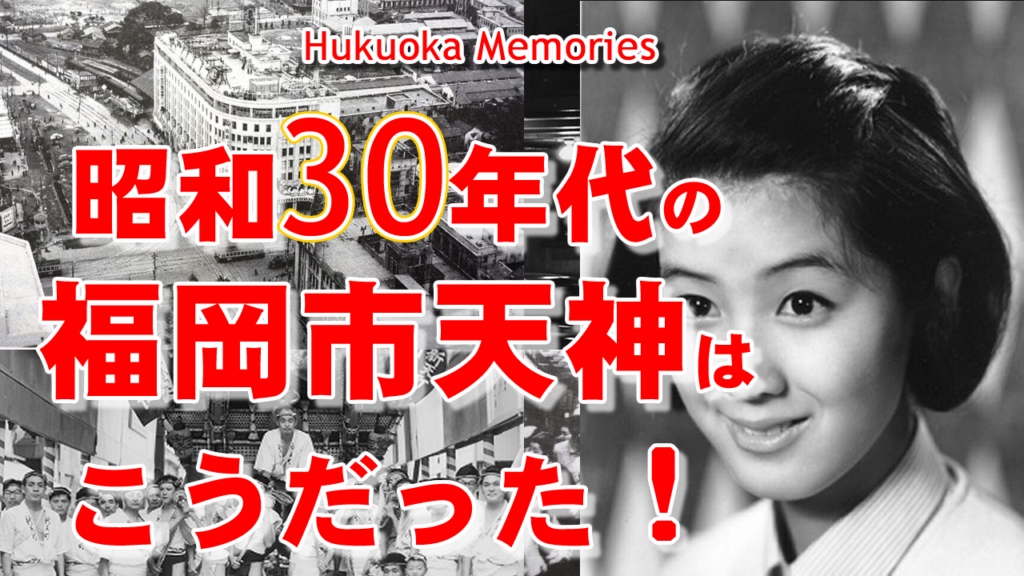福岡市の中心・天神という地名。そのルーツは、菅原道真を祀る「水鏡天満宮」にあります。
本記事では、水鏡天満宮の由来や歴史、菅原道真との関係、そしてかつての神社跡地や現在地について詳しく解説します。
水鏡天満宮と菅原道真のゆかり
昌泰4年(901年)、菅原道真は藤原氏との政争に敗れ、都から大宰府へと左遷されました。これは日本史でも有名な出来事です。
福岡・博多に到着した道真は、現在の薬院新川(旧・四十川)の水面に映ったやつれた自分の姿を見て嘆き悲しんだと伝えられています。
この川には現在、「姿見橋」という橋が架かっており、西鉄薬院駅から天神ロフト方面に向かって歩いていくと見つけることができます。
ちなみに「四十川(しじゅうがわ)」の由来は「死時有川(しじがわ)」。道真が「まるで亡霊のようだ、この川で死ぬだろう」と嘆いたことに由来しているとされます。
容身神社と今泉の石碑
道真の死後、地元の人々はその霊を慰めるため、中央区今泉に神社を建立し、「容身(すがたみ)神社」と名づけました。
.jpg)
現在、この神社の跡地には民家が建っており、当時の名残として石碑のみが残されています。屋根瓦には道真ゆかりの「梅の紋」が見られ、隣には「余香館」という表札もあります。
現在地・天神への移転理由とは?

江戸時代初期、福岡藩の初代藩主・黒田長政は、福岡城の鬼門(北東)にあたる場所に神の力を配するため、容身神社を現在の天神の地へ遷座。鬼門封じ・風水的都市設計の一環として行われました。
これにより、神社の周辺は「天神町(てんじんのちょう)」と呼ばれるようになり、現在の「天神」という地名の由来となったのです。
なお、当時の福岡では「ん」を抜いた発音が一般的でした。例:「てんじのちょう(天神町)」「やくい(薬院)」「もろみ(室見)」など。
廣田弘毅と水鏡天満宮の扁額

実は、水鏡天満宮の鳥居に掲げられている扁額(へんがく)は、第32代内閣総理大臣・廣田弘毅が11歳の時に書いたとされています。
廣田弘毅は、福岡市天神出身で、貧しい石屋の子から首相にまで上り詰めた人物。今では知る人が少ないかもしれませんが、郷土の誇りともいえる存在です。

広田弘毅について動画でわかりやすく紹介しています。
The Origin of Tenjin’s Name – The Story of Suikyo Tenmangu Shrine
Did you know that the name of Fukuoka’s busiest district, Tenjin, comes from a small but historically rich shrine called Suikyo Tenmangu?
This peaceful shrine, nestled in the city center, holds a deep connection to the Heian-period scholar and statesman Sugawara no Michizane.
Suikyo Tenmangu and Sugawara no Michizane
In the year 901 (Shōtai 4), Sugawara no Michizane was exiled from Kyoto to Dazaifu due to political conflict with the Fujiwara clan—a famous episode in Japanese history.
Upon arriving in Hakata, he looked into the surface of what is now known as Yakuin Shinkawa (formerly Shijugawa) and saw his worn-out reflection. Saddened, he reportedly lamented his fate.
Today, if you walk from Nishitetsu Yakuin Station toward Tenjin Loft along the river, you’ll find Sugatami-bashi (“Mirror Bridge”).
I tried to see my reflection there too—but it didn’t work! (laughs)
Interestingly, the old name Shijugawa was originally written as “死時有川” (River of Death). Michizane is said to have remarked, “This is the river where I will die,” upon seeing his ghostly face.
The Original Mirror Shrine in Imaizumi
Locals, moved by his story, built a shrine in what is now Imaizumi, Chuo Ward and named it Sugatami Jinja, meaning “Mirror Shrine.”
.jpg)
Today, the shrine site is a private residence, but a stone monument still stands. A house nearby features a plum blossom crest on the roof tiles and a sign that reads “Yokokan.”
Relocation to Tenjin and Feng Shui Urban Planning

